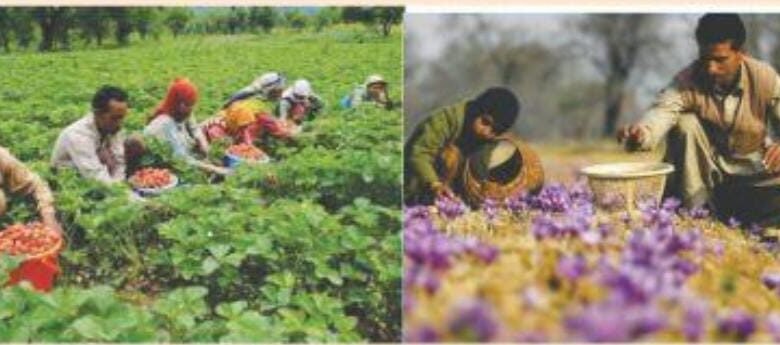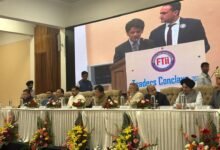“Revitalizing Rural Kashmir: Transformative Initiatives Under Lt. Governor Manoj Sinha’s Leadership”

“Revitalizing Rural Kashmir: Transformative Initiatives Under Lt. Governor Manoj Sinha’s Leadership”
“Modernizing Agriculture, Empowering Entrepreneurs, and Reviving Handicrafts to Drive Socio-Economic Growth in the Valley”
Aadil Bashir Dar
Srinagar: In the background of peaceful conditions in the Kashmir Valley, the rural economy has been strengthened by the increase in social and economic development.
Under the effective and dynamic leadership of the Lieutenant Governor, modern technology for agriculture and horticulture has been introduced to the level of economic dependence.
In the Kashmir valley, under the effective and dynamic leadership of Lt. Governor Manoj Sinha, the benefits of many farmer-friendly schemes are evident. Infrastructure and market access capacity to farmers and gardeners are being further improved by the LG administration. Efforts to strengthen the rural economy of the valley are ongoing against the backdrop of steady improvement in peaceful conditions. Doing so will not only enhance the socio-economic development of UT but also help in uplifting the standard of living of the rural areas. It is a living fact that the rural economy of Kashmir is heavily dependent on agriculture and horticulture, hence the valley is also famous for high quality produce including saffron, apples, walnuts, almonds and cherries. However, the lack of modern agricultural practices, poor storage facilities and limited access to markets often deprived farmers of the profits they rightfully deserved. And the need to establish an efficient supply chain has been taken by the LG management to ensure that the farmers get a fair price for their produce. Moreover, the rural handicraft industry in Kashmir, famous for its exquisite carpets, shawls and woodwork, is an important source of livelihood for many people. However, the industry has been plagued by lack of innovation, competition from machine-made alternatives and limited access to domestic and international markets. To revive this sector, vocational training programs and introduction of modern design techniques and G-tagging are in progress. Further, ways are being explored for the government and the private sector to work together to promote these handicrafts in the national and international markets. The government needs to encourage entrepreneurship in the valley. Initiatives such as low-interest loans, mentoring programs, and business incubators can help nurture a new generation of entrepreneurs who can create economic growth and employment opportunities in the Valley. Strengthening the rural economy in the Kashmir Valley is difficult but not insurmountable. This requires a comprehensive approach. Combining economic reforms with infrastructural development and a strong focus on new technological innovations is the key to success. Rewrite this
In the serene backdrop of Kashmir Valley’s peaceful conditions, the rural economy has seen a notable uplift, bolstered by strides in social and economic development. Under the dynamic leadership of Lieutenant Governor Manoj Sinha, the introduction of modern agricultural and horticultural technologies has reduced dependency and enhanced economic prospects.
The administration’s commitment to farmer-friendly schemes is evident, with ongoing efforts to bolster infrastructure and market access for farmers and horticulturists. This concerted push aims not only to augment the socio-economic fabric of the Union Territory but also to elevate the living standards in rural areas.
Recognizing the valley’s heavy reliance on agriculture and horticulture, renowned for its premium saffron, apples, walnuts, almonds, and cherries, the administration acknowledges the longstanding challenges faced by farmers. Issues such as outdated agricultural practices, inadequate storage facilities, and limited market access have often hindered farmers from realizing their full potential.
To address these challenges, the administration is actively working on establishing efficient supply chains to ensure fair compensation for farmers. Additionally, initiatives are underway to revitalize the rural handicraft industry, renowned for its intricate carpets, shawls, and woodwork.
To rejuvenate this sector, vocational training programs, modern design techniques, and initiatives like G-tagging are being implemented. Moreover, collaborative efforts between the government and private sector are being explored to promote these handicrafts domestically and internationally.
Encouraging entrepreneurship is also a focal point of the administration’s strategy. Initiatives such as low-interest loans, mentoring programs, and business incubators aim to foster a new wave of entrepreneurs, thereby driving economic growth and generating employment opportunities in the Valley.
Strengthening the rural economy in Kashmir demands a multifaceted approach, blending economic reforms with infrastructural development and technological innovations. With concerted efforts and strategic interventions, the path to prosperity for rural Kashmir is challenging yet achievable.





